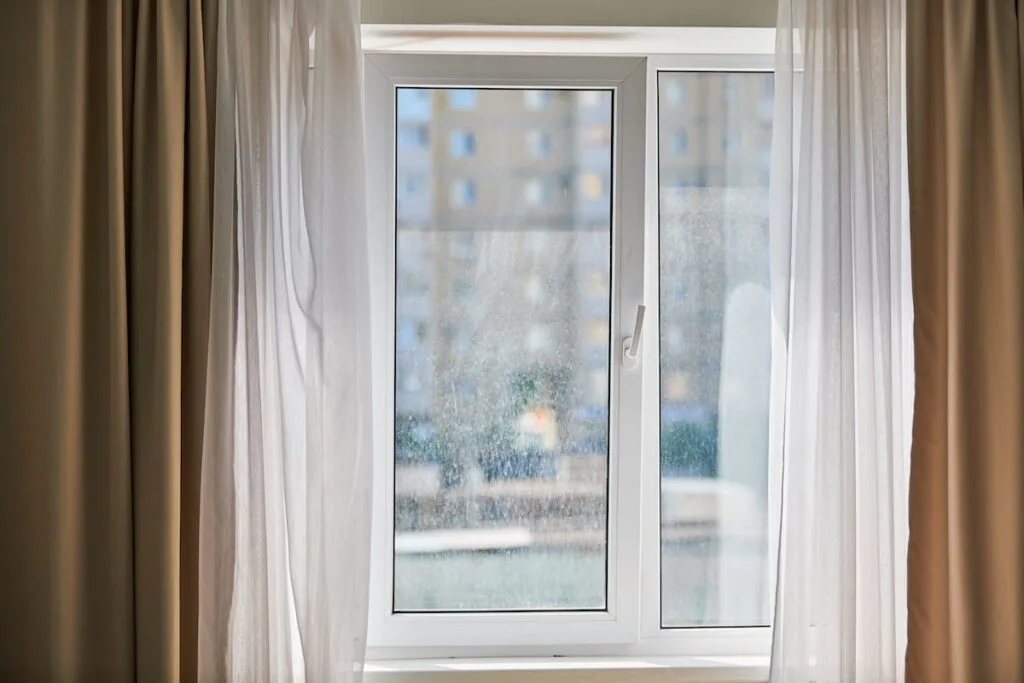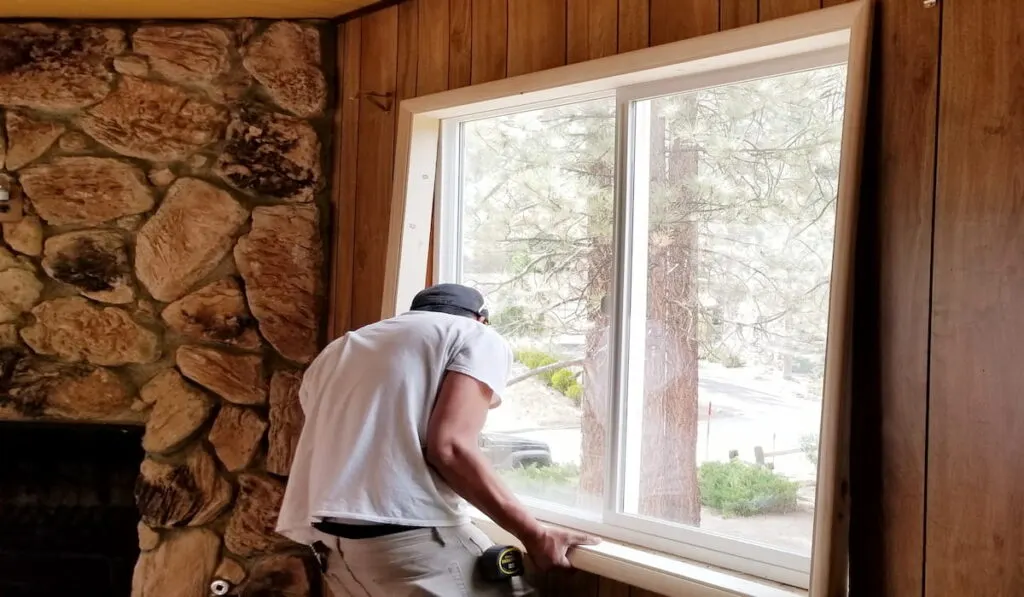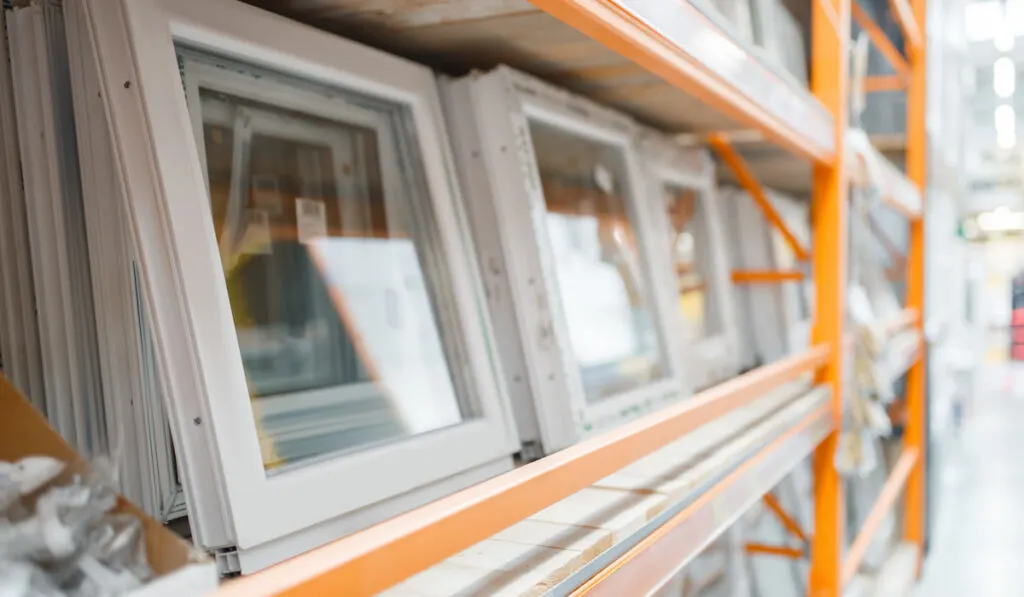*This post may have affiliate links, which means I may receive commissions if you choose to purchase through links I provide (at no extra cost to you). As an Amazon Associate, I earn from qualifying purchases. Please read my disclaimer for additional details.
If you’ve ever paid close attention to your windows, you’ve probably noticed that they get very foggy from time to time, particularly on the outside of the window. No one would blame you for wondering why this happens, as it requires one to be scientifically inclined to know it. And make no mistake, it is mostly science.
Foggy windows can occur for many reasons, and it can occur between the panes, on the outside of the window, or on the inside. In the case of exterior window fog, the primary cause is a significant difference in temperature between your home and the outside world. There are other factors, but that plays the most critical role.

Not only will we discuss in greater detail why your windows may fog on the outside, but we will also discuss how you can mitigate this or outright prevent it from happening if you feel so inclined.
Believe it or not, there are options if you want your windows to fog less. But first, onto the nuts and bolts of how and why fogging occurs.
Table of Contents
The Cause of Window Fogging
Nearly any part of your window can fog. The exterior panels, the interior panels, and even between the panes themselves.
In the case of exterior fogging, the main culprit is the vast difference in temperature between the inside and the outside world: specifically, the temperature in your home is significantly lower than that of the outside.
When there is a big difference in both temperature and humidity, moisture condensation will occur on the coldest surface available, which in this case, is the exterior glass of your window.
You’ve probably witnessed this phenomenon many times while enjoying a drink on a warm day: the outside of your glass, cup or can gets covered in water, practically sweating.
The same thing can happen in the reverse: if the temperature outside was much cooler than it was inside your home, then you would get fogging on the interior window pane instead.
Of course, condensation is more prevalent when there is more humidity, so this becomes a bigger problem if it is very humid inside of your house.
If you find that you are having such a problem, consider taking measures to lower the humidity in your home. This can be easily achieved with a dehumidifier, which you can place in any room of your choosing.

What if the Fog is Between the Panes?
Upon initial inspection, you may believe that the fog on your window is on the exterior if you are looking through it from the inside. But it’s possible that the fog is actually between the interior and exterior pane. The cause for this is not quite the same as it is for the other two situations. In this case, it’s usually an issue with the window.
Usually, condensation between the two panes means that the seal between them has been compromised, which allows moisture to leak in. It’s often a problem for older windows, or those that haven’t been maintained well.
It’s also more likely to occur on the side of the home that gets the most sun, since direct sunlight can accelerate the failure of a seal.
If your windows are relatively new, you shouldn’t have to worry too much about something like this. And even if you do get condensation between the panes of your windows, it is not as though this is causing some extreme amount of damage.
That said. it’s a good idea to get it looked at if you are concerned about peak energy efficiency or you just don’t like it.

Getting Real Technical
If you want to get very scientific about windows and fogging, here’s the breakdown: modern windows are sealed with advanced materials, but within those seals also lie special inert gasses, like argon.
Yes, these gasses are sealed between the two panes of your modern window. There’s also a super thin layer of silver oxide coating on the inner surface of the outer pane.
That silver oxide coating functions as a reflector for the sun’s infrared rays. Even so, fogging can occur between the two panes, because the seals between the panes deteriorate over time.
Some of the sealing material will absorb incoming moisture, but once they become saturated and can’t hold any more, it starts condensing on your window.
Ultimately, how fast this breakdown happens depends on many factors, including the materials used, the actual environment, amounts of direct sunlight, window design, and a lot more.

But no matter what you do, the seals on the window will break down eventually, so you can expect some inter-pane condensation.
Of course, this isn’t the same as exterior pane condensation, which is actually on the outermost surface of your window exposed to the outside world.
But to be frank, there’s nothing you can really do to stop that other than ensure the temperature in your home is approximately the same as it is outside (and who really wants that?).
Mitigating the Amount of Fogging Your Windows Endure
OK, so you now know what causes your windows to fog, be it inside, outside, or literally in-between. But how do you go about stopping it, or at least mitigating how much there is or how often it happens? Well, there are many different factors to consider, but don’t worry: we’ll cover them all.
Choosing the Right Glass

Undoubtedly the most important part of a window, the right glass makes all the difference, and contrary to popular belief, not all glass is created equal.
There are many types of windows using many types of glass out there. Some are designed to function better in certain environments, while others may focus more on energy saving.
This is important not just for getting less fog on your windows, but also for lowering your energy bill, preventing fading damage to fabrics, and making your home more comfortable overall.
The most important thing is to make sure your windows are the best suited for your climate, but there are other things to consider as well.
For instance, you also need to consider how much noise you want your window to block from the outside world, as well as how much sun exposure it will get, the altitude your home is at, and the size the window will have to be.
All of this plays a role in which glass will be the best suited for your home.
Different Types of Glass
Of course, there are different brands, but overall, there are only a few actual “types” of glass. The most common types are as follows:
- Double-pane glass that has both removable grilles and between-glass blinds
- Insulating glass that has inert gas between the panes and a reflective coating as mentioned previously
- Triple-pane glass with cellular shades, decorative panels and blinds between them, as well as removable grilles
Each of these types of glass has a different advantage, but as you can probably surmise based on the description alone, some of them are a lot more expensive than others. Still, you should do research on all of these different types, as some may be less likely to fog than others in your particular scenario.
Picking the Right Manufacturer

Really, the only thing to do to stop your windows from fogging as much is to get a certain type of window to start with, or to replace the ones you have. When doing this, it’s important to pick the right manufacturer. Like with all products, some providers are more reputable than others.
You’ll want to look for a manufacturer that you know test their products for moisture infiltration. After all, moisture infiltration is how most fogging happens, with the exception of the exterior surface, so if you want to avoid the much worse inter-pane fogging, you’ll want to know the manufacturer has tested their products for it.
You’ll probably also want to trust a manufacturer that has a third-party verification of some sort.
Common verifications of renown for windows include Energy Star and the Window and Door Manufacturer’s Association.
These verifications usually come on the heels of inspections test the quality of the final product as well as the process of making them.
Needless to say, a manufacturer that has a verification is much more trustworthy than one that doesn’t.
Summary
Fog on the outside of your windows is caused by condensation on the pane when it is cooler in your house than it is outside. There’s nothing you can do to stop this other than equalize the temperature between your home and the outside. However, sometimes the condensation you see is actually between your panes.
This is caused by the seal between the panes breaking down and allowing moisture inside. This will always happen eventually but can be mitigated if you buy the right type of windows from trustworthy manufacturers. Even so, it will happen eventually: that just can’t be stopped. Still, you can take measures to make it less of a headahe.
